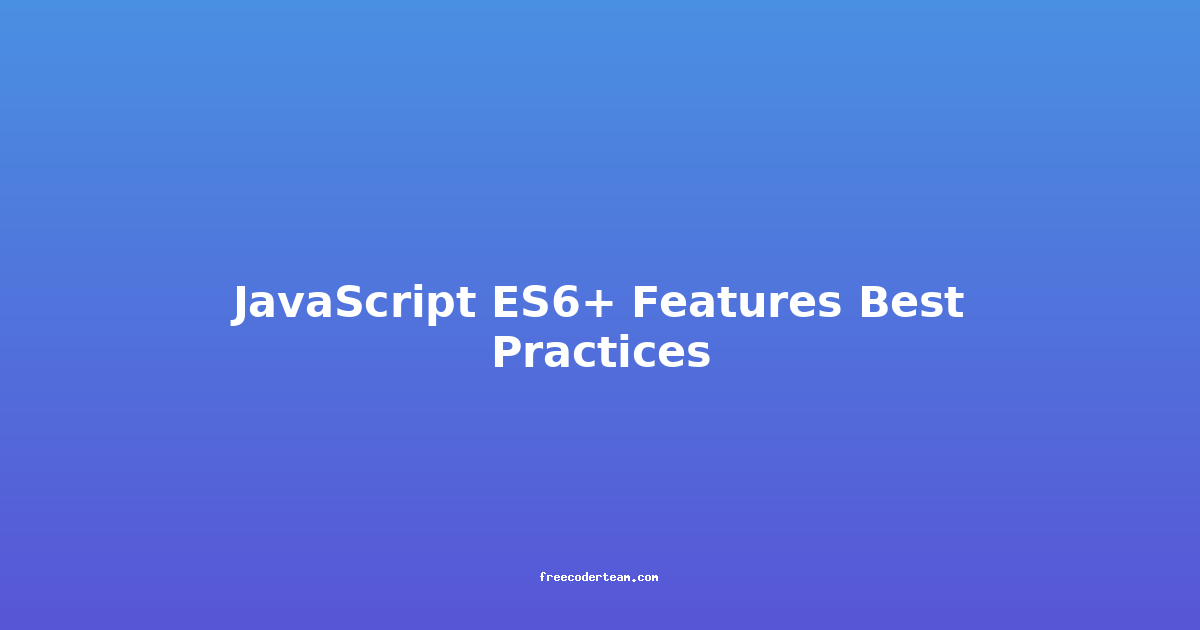Understanding Code Review Best Practices: Tips and Tricks
Code reviews are a cornerstone of software development, playing a crucial role in ensuring code quality, identifying bugs, and fostering collaboration among team members. Effective code reviews not only improve the reliability of software but also enhance the learning experience for developers. In this comprehensive guide, we will explore best practices, actionable tips, and practical insights to help you conduct more effective code reviews.
Why Code Reviews Matter
Before diving into best practices, let’s understand why code reviews are so important:
- Bug Detection: Code reviews help identify bugs and logical errors that might have been overlooked during initial development.
- Code Quality: They ensure adherence to coding standards, best practices, and architectural guidelines.
- Knowledge Sharing: Code reviews facilitate the sharing of knowledge across team members, helping everyone learn from each other’s expertise.
- Maintainability: By encouraging clean and maintainable code, code reviews make it easier for future developers to understand and work with the codebase.
However, for code reviews to be effective, they must be conducted thoughtfully and efficiently. Here are some best practices to keep in mind.
Best Practices for Effective Code Reviews
1. Keep Reviews Timely
One of the most critical aspects of code reviews is timeliness. Reviews should be conducted as soon as possible after a pull request (PR) is submitted. Delays in reviews can:
- Cause context loss for the author.
- Slow down the development process.
- Lead to large, overwhelming PRs that are difficult to review.
Actionable Tip:
Set a team policy for reviewing PRs within a specific timeframe (e.g., 24–48 hours). Tools like GitHub, GitLab, or Bitbucket can help by sending notifications and reminders.
Example:
# Use GitHub Actions to automatically assign reviewers and send reminders
name: Code Review Reminder
on:
pull_request:
types: [opened, synchronize]
jobs:
review-reminder:
runs-on: ubuntu-latest
steps:
- name: Assign Reviewers
uses: octokit/request-action@v2
with:
route: POST /pulls/{pull_number}/requested_reviewers
pull_number: ${{ github.event.pull_request.number }}
inputs: |
{
"reviewers": ["reviewer1", "reviewer2"]
}
2. Focus on Clarity and Constructiveness
Code reviews should be constructive and focused on improving the code, not critiquing the developer. Comments should be clear, concise, and aimed at providing actionable feedback.
Actionable Tip:
Use a balanced approach when providing feedback. Start with positive comments to build rapport (e.g., "Great job on refactoring this part of the code!"), followed by constructive suggestions for improvement.
Example:
Instead of:
"This is bad."
Try:
"The current implementation works, but it could be made more efficient by using a map instead of a loop. This would improve readability and performance."
3. Ensure Reviews Are Detailed but Not Overwhelming
Reviews should be detailed enough to catch issues, but not so extensive that they become overwhelming for the author. A good rule of thumb is to focus on a manageable number of comments per review.
Actionable Tip:
Limit the number of comments per PR to around 5–10. If there are more issues, prioritize the most critical ones first.
Example:
# Review Comments for PR #123
## Positive Notes:
- The refactoring of the `calculateTotal` function is well-structured and improves readability.
## Suggestions for Improvement:
1. **Performance Optimization**: The current implementation uses a loop that could be replaced with a `reduce` function for better performance.
2. **Type Safety**: Add type annotations to the function parameters to ensure type safety and improve maintainability.
3. **Error Handling**: Consider adding more robust error handling for edge cases.
## Questions:
- Why was the `legacyData` variable kept in the code? Could it be removed or refactored for cleaner code?
4. Foster a Culture of Collaboration
Code reviews should be a collaborative process, not a punitive one. Encourage reviewers to discuss their feedback openly and respectfully, and for authors to actively engage in resolving issues.
Actionable Tip:
Use tools like Slack, Microsoft Teams, or Zoom for quick discussions if a PR has complex issues that require real-time conversation.
Example:
Reviewer: "Hey [Author], I noticed the `calculateTotal` function is quite complex. Could we discuss how to simplify it during our next stand-up meeting?"
Author: "That sounds great! I was actually thinking the same. Let’s explore using a functional approach."
5. Use Automated Tools to Complement Reviews
Automated tools like linters (e.g., ESLint, Prettier), static code analyzers (e.g., SonarQube), and CI/CD pipelines can help identify common issues and reduce the cognitive load on human reviewers.
Actionable Tip:
Integrate automated tools into your development workflow to catch basic issues like syntax errors, formatting inconsistencies, and code style violations before human reviews.
Example:
# Example GitHub Actions workflow for automated code review
name: Code Quality Check
on:
pull_request:
branches:
- main
jobs:
lint-and-test:
runs-on: ubuntu-latest
steps:
- name: Checkout Code
uses: actions/checkout@v3
- name: Install Dependencies
run: npm install
- name: Run Linter
run: npm run lint
- name: Run Tests
run: npm test
6. Establish Clear Guidelines and Standards
Having clear coding guidelines and standards helps reviewers and authors align on expectations. This includes everything from naming conventions to architectural patterns.
Actionable Tip:
Create a Code Style Guide and share it with the team. Tools like prettier and eslint can enforce these standards automatically.
Example:
// Example ESLint configuration
{
"rules": {
"indent": ["error", 2],
"semi": ["error", "always"],
"quotes": ["error", "single"]
}
}
7. Rotate Reviewers Regularly
Rotating reviewers ensures that different perspectives are brought to the table. It also prevents burnout among reviewers and distributes the learning opportunities across the team.
Actionable Tip:
Use tools like GitHub’s “Request Reviewers” feature or custom scripts to automatically assign reviewers based on rotation schedules.
Example:
// Example script to assign reviewers based on rotation
const reviewers = ['alice', 'bob', 'charlie'];
let currentIndex = 0;
function assignReviewer() {
const reviewer = reviewers[currentIndex];
currentIndex = (currentIndex + 1) % reviewers.length;
return reviewer;
}
// Example usage in a PR automation workflow
const assignedReviewer = assignReviewer();
console.log(`Assigned Reviewer: ${assignedReviewer}`);
8. Review Small, Manageable Changes
Large PRs are difficult to review thoroughly and can overwhelm both reviewers and authors. Splitting changes into smaller, focused PRs makes reviews more manageable.
Actionable Tip:
Encourage developers to break down large features into smaller, atomic changes. Each PR should ideally address a single issue or feature.
Example:
Instead of:
# PR Title: Refactor entire backend system
Try:
# PR Title: Refactor user authentication module
9. Provide Feedback on Documentation and Tests
Code reviews should not only focus on the code itself but also on related documentation and tests. Ensure that the code is well-documented and that tests cover the new functionality adequately.
Actionable Tip:
Reviewers should check for clear, concise comments, JSDoc or equivalent documentation, and comprehensive test coverage.
Example:
// Good example of documented code
/**
* Calculate the total price of items in a cart.
* @param {Array<Object>} items - Array of cart items.
* @param {Object} pricingRules - Object containing pricing rules.
* @returns {number} - Total price of the cart.
*/
function calculateTotal(items, pricingRules) {
return items.reduce((total, item) => {
const price = item.quantity * pricingRules[item.productId].price;
return total + price;
}, 0);
}
10. Follow Up on Resolutions
After a PR is reviewed, it’s essential to follow up on the feedback and ensure that issues are resolved appropriately. This step completes the review cycle and ensures continuous improvement.
Actionable Tip:
Use tools like GitHub’s “Review Status” feature to track the resolution of comments. Reviewers should also communicate with authors to ensure understanding and agreement on changes.
Example:
# Review Comment:
"I noticed the `calculateTotal` function lacks proper error handling for invalid input. Please add checks for null or undefined values."
# Author's Response:
"Thanks for the feedback! I've added input validation to the function. Please review the changes."
# Reviewer's Follow-Up:
"Looks good! The input validation is now in place. Approving the PR."
Conclusion
Code reviews are a powerful tool for improving code quality and fostering collaboration in software development. By following these best practices—such as keeping reviews timely, focusing on clarity, and leveraging automated tools—you can make your code reviews more effective and beneficial for your team.
Remember, the goal of code reviews is not just to catch bugs but also to create a learning environment where developers can grow and improve. By implementing these tips and tricks, you can enhance your team’s productivity and ensure that your codebase remains robust and maintainable.
Happy reviewing! 😊
If you have any questions or need further guidance, feel free to reach out!




